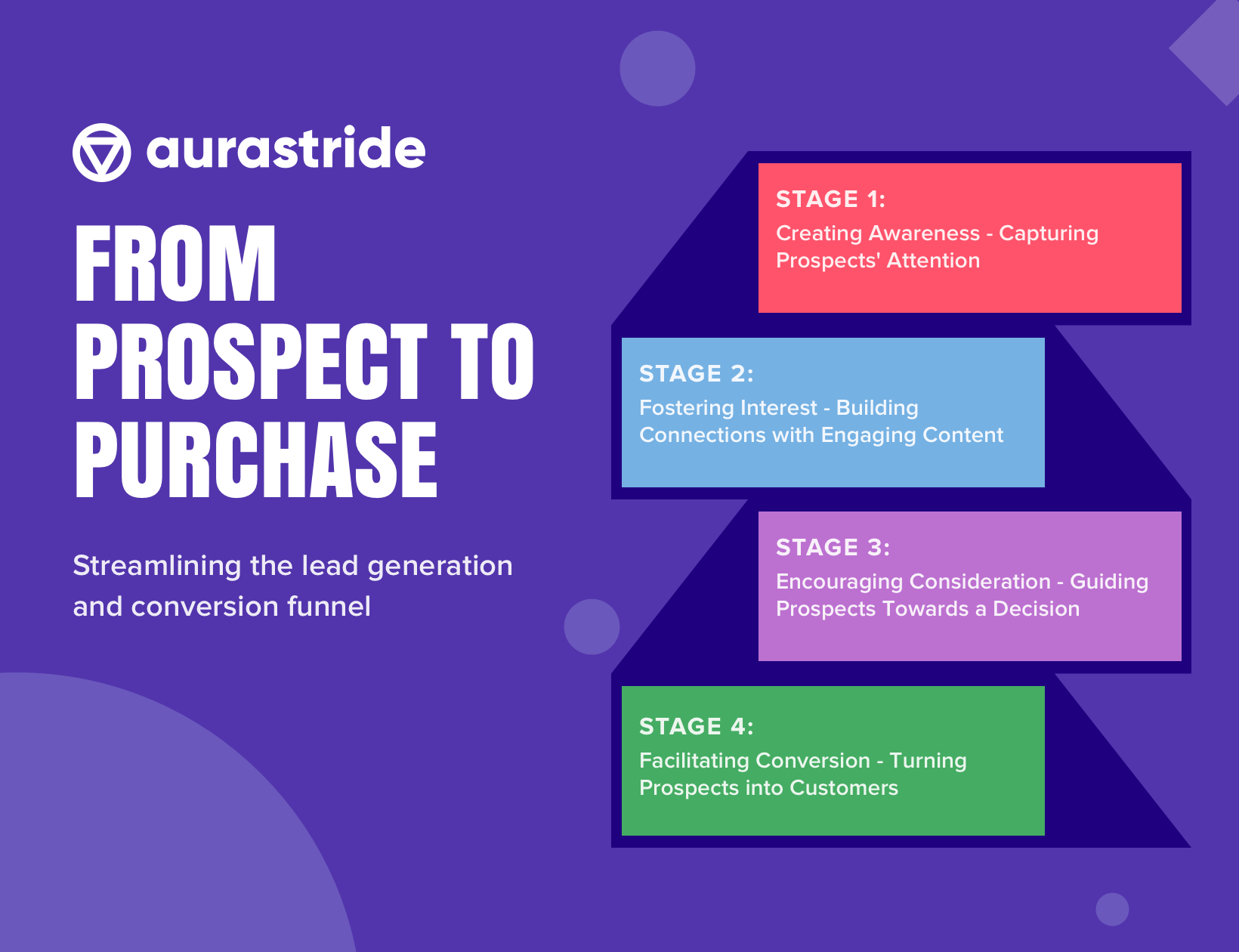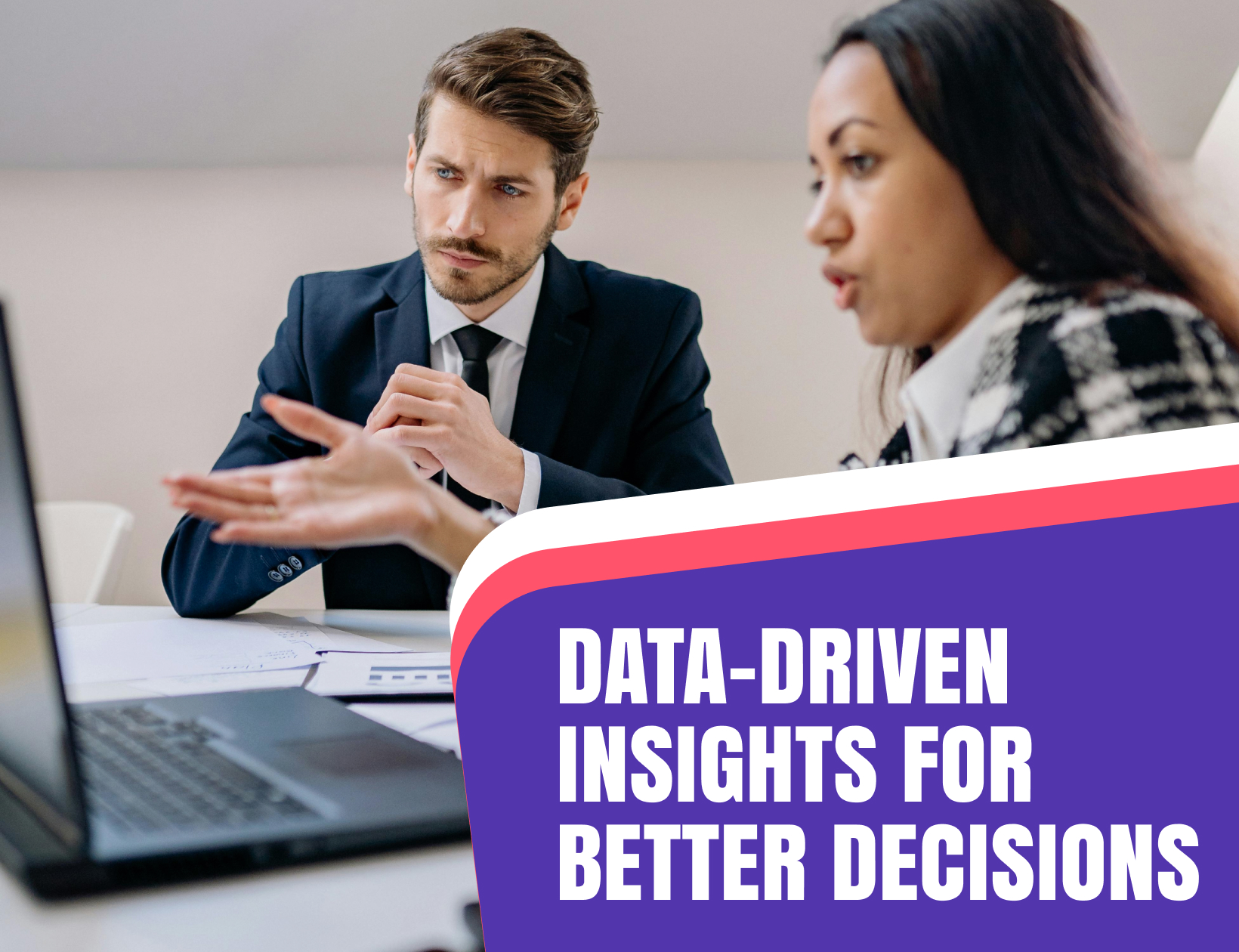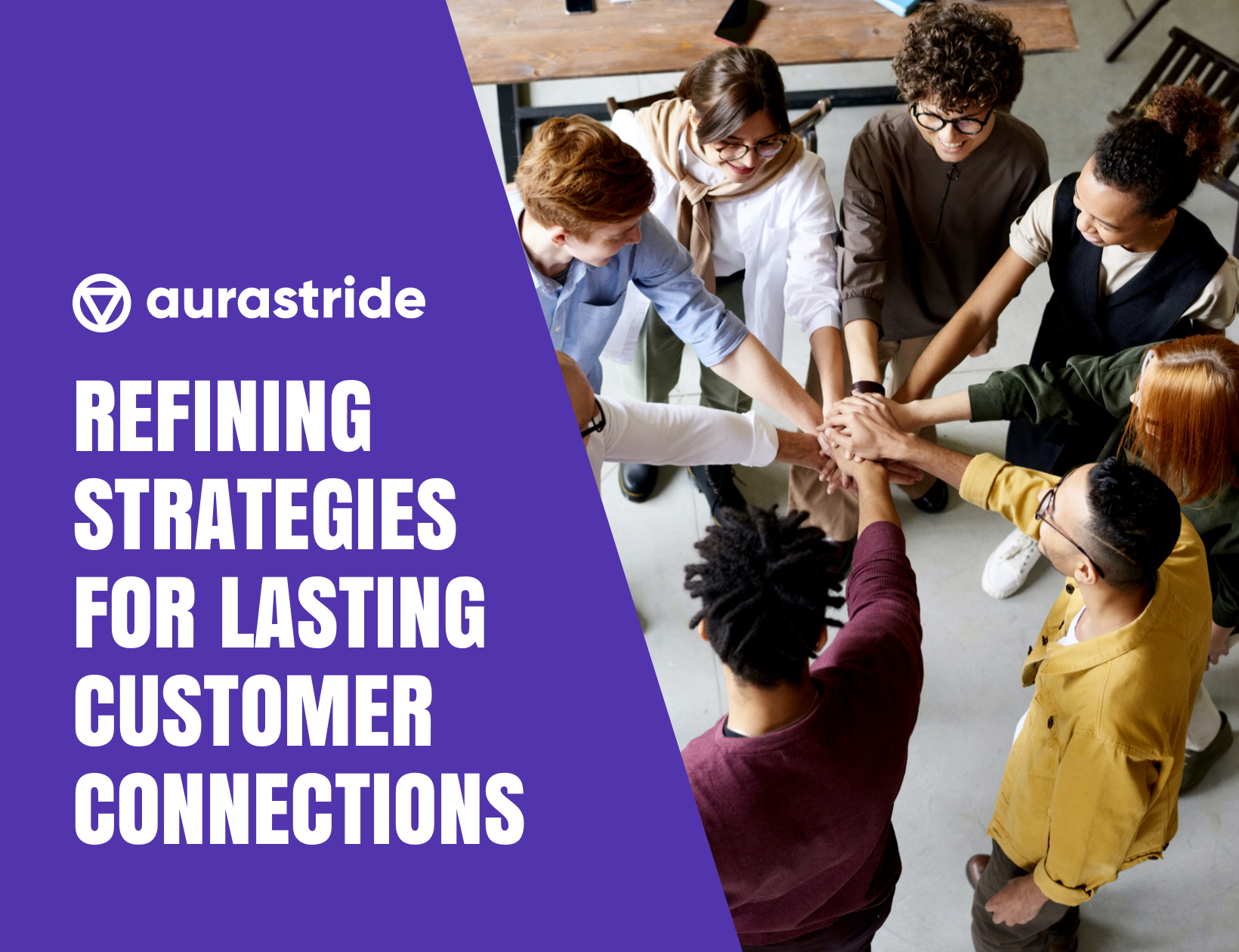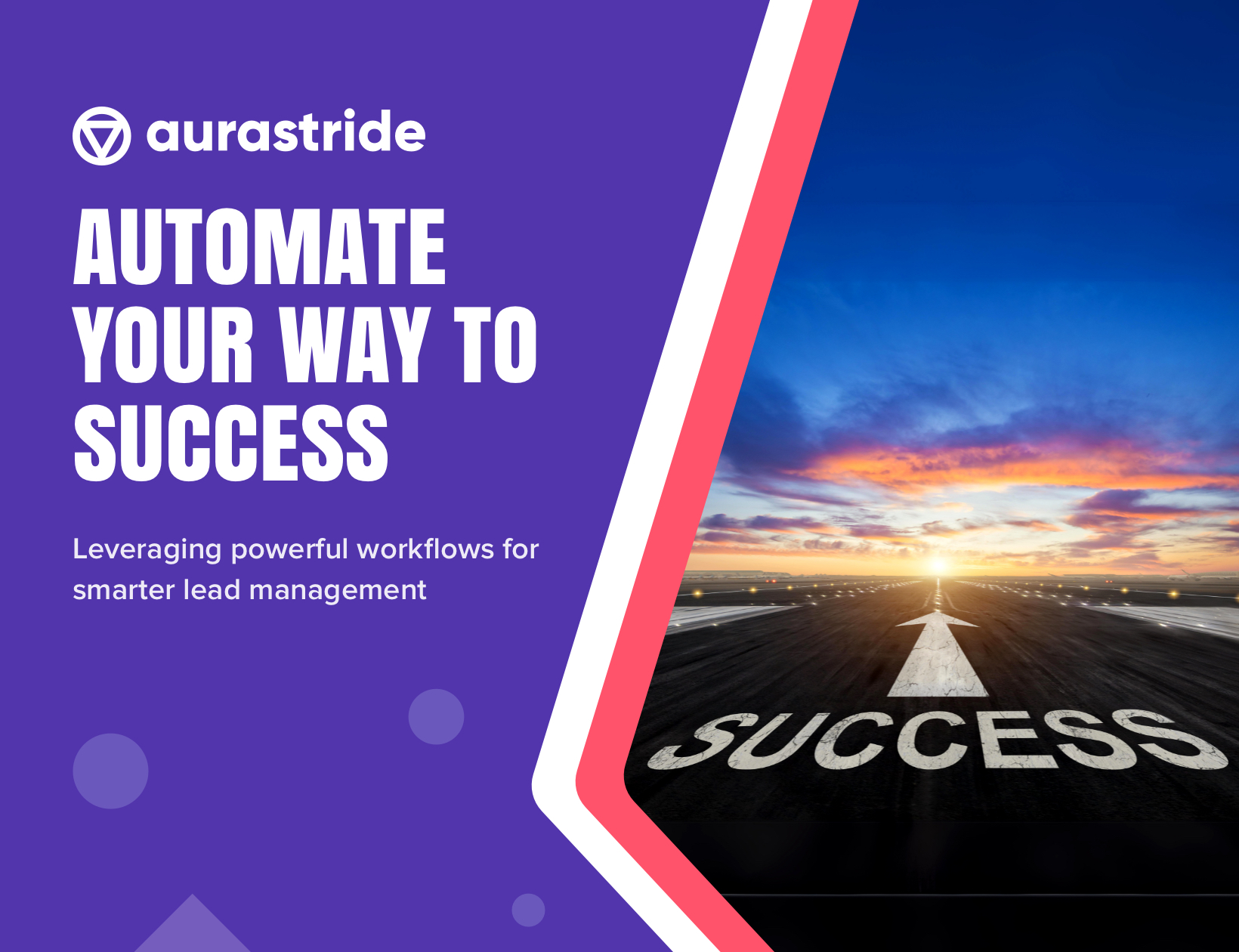From prospect to purchase: Streamlining the lead generation and conversion funnel

In the landscape of digital interaction, the journey to serve from potential customer to repetitive buyer emerges as a convincing concept. This blog sets sail on a profound journey, decoding details and presenting an array of strategies to streamline the complex processes of attracting and converting prospects. From the initial proposals of exploration to the success of conversion, this comprehensive guide serves as a compass, guiding businesses through the dynamic terrain of customer acquisition with flair and finesse.
Understanding the Lead Generation & Conversion Funnel:
Before researching optimisation strategies, it is crucial to establish a foundational understanding of the lead generation and conversion funnel. This multifaceted funnel mirrors the stages a prospect traverses, starting from awareness, moving to interest, consideration, and culminating in conversion. Each stage presents unique challenges and opportunities, making it imperative for businesses to adopt a strategic and customer-centric approach to guide prospects seamlessly through the funnel.
Stage 1: Creating Awareness – Capturing Prospects’ Attention
- Content Marketing Excellence: Engage prospects through a multifaceted content marketing strategy that addresses their pain points and provides valuable insights. From meticulously crafted blog posts to captivating social media content, a robust content marketing strategy establishes your brand as an authoritative source in your industry.
- Search Engine Optimisation (SEO): Strengthen your brand’s visibility by optimising your online presence for search engines. The strategic use of keywords, relevant meta tags, and consistently producing high-quality content ensures that your brand is not only discoverable but also positioned as a go-to resource when prospects actively search for related products or services.
- Social Media Engagement: Leverage the power of social media platforms to build brand awareness and initiate meaningful connections. Engage with your audience, share valuable content, and create a community around your brand. Social media becomes a powerful tool for fostering relationships and initiating conversations with potential customers.
Stage 2: Fostering Interest – Building Connections with Engaging Content
- Email Marketing Campaigns: Develop targeted and personalised email campaigns that nurture leads and provide them with valuable information. Crafting content that resonates with the prospect’s journey keeps them engaged, moving them further down the funnel.
- Interactive Content Strategies: Capture and maintain interest through interactive content such as quizzes, surveys, and webinars. These interactive experiences not only engage prospects but also provide valuable data insights for further customisation and personalisation.
- Lead Magnets & Incentives: Offer valuable resources, such as e-books, whitepapers, or exclusive discounts, as incentives for prospects to share their contact information. This not only generates leads but also establishes a reciprocal relationship by demonstrating the value your brand can provide.
Stage 3: Encouraging Consideration – Guiding Prospects Towards a Decision:
- Dribble Campaigns & Marketing Automation: Implement dribble campaigns and marketing automation to deliver targeted messages based on prospect behavior. This ensures a personalised and timely approach, guiding prospects through the consideration stage at their own pace.
- Case Studies & Testimonials: Showcase success stories through case studies and testimonials. Providing real-world examples of how your product or service has benefited others builds credibility and implants confidence in prospects considering a purchase.
- Webinars & Product Demonstrations: Host webinars or product demonstrations to provide in-depth insights into your offerings. This interactive approach allows prospects to experience the value of your product or service firsthand, addressing any persistent concerns they may have and fostering a deeper connection.
Stage 4: Facilitating Conversion – Turning Prospects into Customers:
- Optimised Landing Pages: Ensure that your landing pages are meticulously optimised for conversion. A clear and concise layout, compelling calls-to-action, and minimal friction in the conversion process contribute to a systematic transition from consideration to action.
- Transparent Pricing & Incentives: Clearly communicate pricing information and offer incentives to prompt conversion. Transparency builds trust, and providing additional value, such as discounts or exclusive offers, can be the final push needed to convert a prospect into a customer.
- Efficient Checkout Processes: Streamline the checkout process to reduce any potential barriers to conversion. A user-friendly and efficient checkout experience ensures that prospects do not encounter obstacles at the final stage of their journey.
Post-Conversion Strategies:
The journey does not end with a conversion; post-conversion strategies are equally crucial for fostering customer loyalty and advocacy.
- Customer Onboarding: Facilitate a smooth onboarding process to ensure that new customers are guided through the initial stages of using your product or service. Clear instructions and support contribute to a positive post-conversion experience, setting the stage for long-term satisfaction.
- Feedback & Reviews: Encourage customers to provide feedback and leave reviews. Positive testimonials enhance your brand’s credibility, while constructive feedback offers valuable insights for continuous improvement. Actively seeking and addressing customer feedback demonstrates a commitment to excellence.
- Post-Purchase Engagement: Maintain engagement through post-purchase communications, exclusive offers, and personalised recommendations. A well-crafted post-purchase engagement strategy contributes to customer retention and promotes ongoing brand loyalty. Nurturing the relationship beyond the initial purchase solidifies your brand’s position as a trusted partner in the customer’s journey.
Conclusion
As we steer the difficult journey from prospect to purchase, mastering the art of customer acquisition requires a strategic, and customer-centric approach.
By understanding each stage of the lead generation and conversion funnel and implementing tailored strategies, businesses can streamline the customer journey, optimise conversion rates, and cultivate lasting relationships with customers.
Embrace the power of personalised engagement, leverage diverse marketing channels, and guide your prospects seamlessly through the funnel to unlock the full potential of your customer acquisition efforts. In an era where customer experience reigns supreme, the ability to navigate and optimise the entire customer journey is the key to sustained success.



